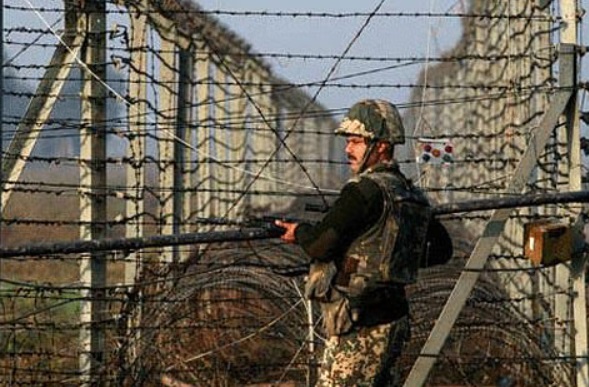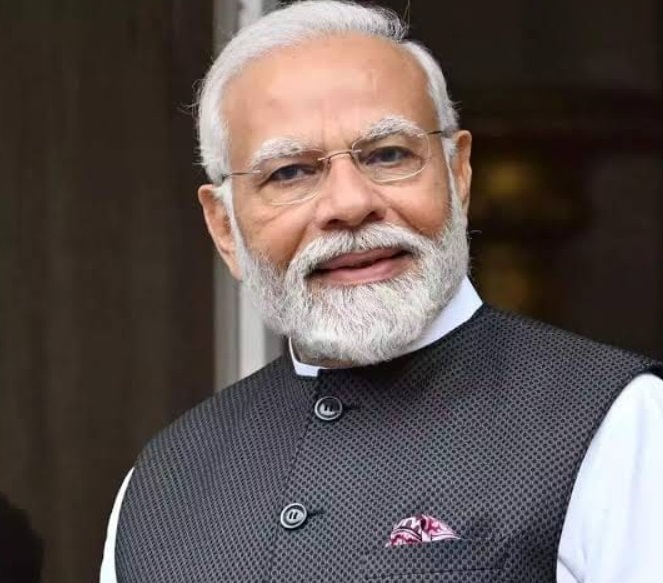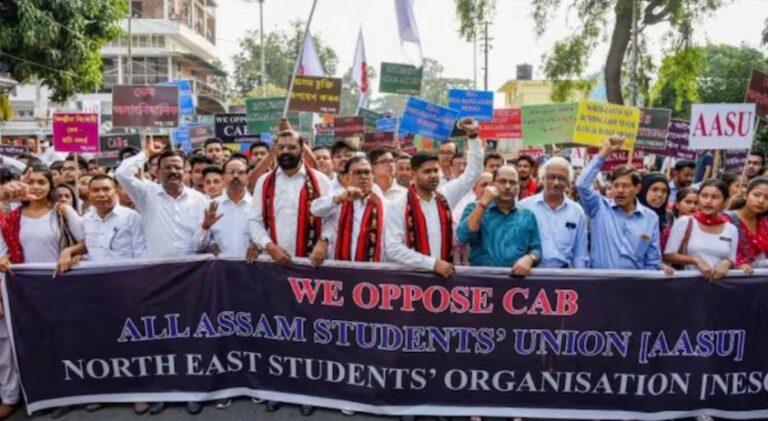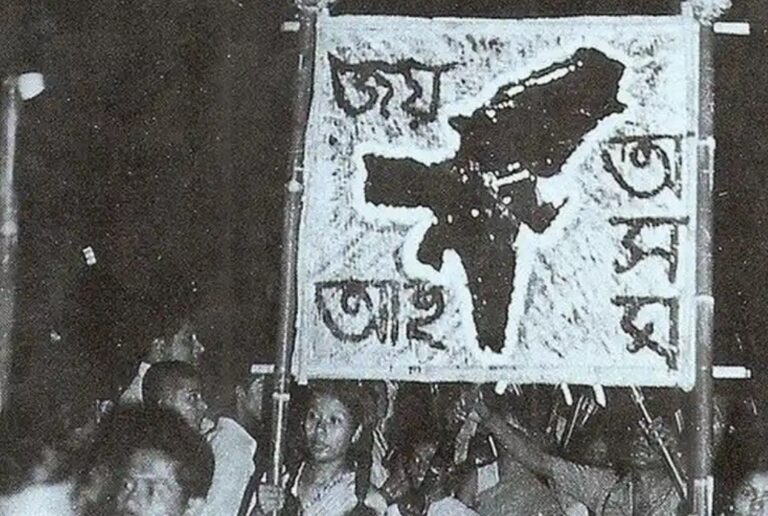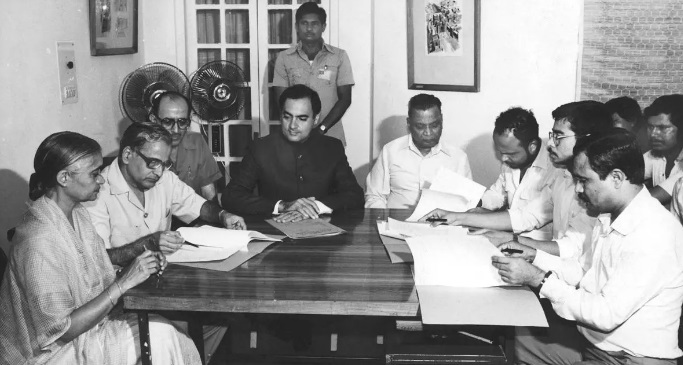Political parties have already started campaigning for the elections. Promises have been made to the people. Political parties are begging for votes from the people by holding large rallies that we should be given whatever we should do whether it is for the sake of development or for the sake of one country one religion or for the sake of protecting democracy. All people have to do is vote.
In large election rallies people were promised to do one thing after the other. But after the formation of the government, the government took an anti-people stand against the people. The government, which has been elected by the people for five years, takes an anti-people stand but the government cannot be overstated. So at the end of 5 years the people decide who will rule?
Does the government fulfil the promises?
In 2014, the BJP had claimed that illegal Bangladeshi immigrants were posing a threat in some northeastern States of India. There was a UPA government at the Centre then.
The then election campaign rally said the BJP would take special measures to resolve the problem of Bangladeshis freely. In particular, the Indo-Bangladesh border was sealed and illegal Bangladeshis had to leave India after May 16, 2014 by tying a towel.
Border between India and Bangladesh
India-Bangladesh border dispute
There are 51 Bangladesh enclaves in Indian territory, amounting to 7,083.72 acres. Of these disputed enclaves, 65 are on the West Bengal-Bangladesh border. Of these, 35 are Indian enclaves in Bangladesh region and 31 are from Bangladesh.
When will May 16 come for PM Modi ?
Participating in an election campaign rally in West Bengal and Assam, the then Prime Ministerial candidate and now Prime Minister Modi had said that illegal Bangladeshis should leave India after May 16.
Prime Minister Modi had said this at campaign rallies in 2014. But today it has been 10 years since that promise. It has been nine years and 10 months since the government was formed in these 10 years. Nine times in these nine years, May 16 has passed. But did the nine illegal Bangladeshis go from India? Especially from Assam?
Participating in the 2014 election campaign rally the present Prime Minister Modi had said that the border which is open to prevent illegal Bangladeshi immigration will be sealed. So that Bangladeshis do not enter India easily. But has the Modi government fulfilled that promise?
Citizenship Amendment Act (CAA)2019
An act passed by the Parliament of India on December 11, 2019. This act is an amended version of the Citizenship Act, 1955. Through this, the persecuted people of India’s neighboring countries of Pakistan, Bangladesh and Afghanistan and hindu, buddhist, sikh, jain, parsi and christian religious minorities who entered India illegally till December 31, 2014, will be given indian citizenship. People of Islam are not included in it.
Movement against The Citizenship Amendment Act
Earlier there was the Citizenship Amendment Bill. Protests began in Assam when the issue of CAB in short was raised in Parliament. Aasu, intellectuals and litterateurs all criticised the central government.
Five youths were martyred in Assam during protests against the Citizenship Amendment Act 2019. Hundreds of people were shocked. The protest took place not only in Assam but also in West Bengal and Delhi.
Assam Accord, AASU and Citizenship Amendment Act 2019
A Memorandum of Understanding (MoU) signed between the Government of India and the leadership of the Assam Movement in New Delhi on August 15, 1985. This agreement brought an end to the Assam movement and as a result, the leadership of the movement formed a political party and subsequently formed the government in Assam. The name of which was Asom Gana Parishad.
When the AASU leadership and the government sat for discussions on the implementation of Clause 6 of the Assam Accord, AASU Chief Advisor Samujjal Kumar Bhattacharya said, “The BK Sharma Committee has submitted its timely report for the implementation of Clause 6.
The safety of the indigenous people will be ensured. Every suggestion in the report has to be implemented. It is clear not to accept the CAA. The problem has to be solved with slogans on the streets and the logic given in the discussion.
Citizenship Amendment Act 2019 and National Register of Citizens (NRC)
The National Register of Citizens covered a long chapter in the history of Assam. At the end of a long journey from 1947 to 2019, there was talk that the National Register of Citizens would provide relief to the people of Assam from illegal Bangladeshis.
The first draft list of the National Register of Citizens was released on July 30, 2018. From a total of 32.9 million applicants, the names of 28.9 million applicants were published in the first draft while the names of 4 million people were left out. Out of those left out, 2.95 million people had applied for inclusion by December 31, 2018.
A brief overview of this long period of the NRC:
The struggle for citizenship rights began with the idea of Indian citizenship after Liaquat Ali along with Jawaharlal Nehru came into force on July 19, 1948, with the introduction of ‘Influx from West Pakistan (Control) Ordinance, 1948’.
The agreement between Prime Minister Jawaharlal Nehru and Liaquat Ali Khan ensured the rights of minorities in India-Bangladesh (then East Pakistan). According to the agreement, refugees from East Bengal, West Bengal, Assam and Tripura were able to get their property rights by December 31, 1950.
March 1, 1950: A six-year-old Assam agitation began over the inclusion of names of illegal foreigners in the voters’ list. It was followed by the Illegal Foreigners ‘ Deportation Act that the Central government took over the power of deportation of foreigners. The act separately mentioned Hindu refugees and Muslim refugees.
The Illegal Deportation of Foreigners from Assam Act was repealed in 1957. On October 24, 1960, a bill was passed in the Assembly to recognise Assamese language as the official language in Assam. The Bengali Language Movement started from Barak Valley in May 19, 1961. The anti-Assamese movement started from Silchar in protest against the declaration of Assamese language as the official language.
The group conflict in East Pakistan in 1964 resulted in a large number of Hindu Bangladeshis crossing the border and entering India. On September 23, 1964 foreigners tribunal orders were issued by the Centre under the Foreigners Act 1946. The central government’s civil courts were set up in collaboration with foreigners tribunals for detection of illegal foreigners.
All Assam Students Union (AASU)
In the 1978 by-election held in Mangaldoi parliamentary constituency, the voter turnout of a large number of illegal citizens made the Assamese people agitated. President’s rule was imposed for the first time in Assam in December 1979.
Some specific clauses of the Assam Accord were:
1. Banning foreign nationals from buying fixed assets
2. Birth and Death Registration
3. Depriving government land of acquisition
4. Promotion of Assamese cultural, social, linguistic identity and heritag
5. Economic development, emphasis on education, expansion of science and technology
6. Grant of Citizenship Certificate by the Central Authority
7. Ensuring border security
The Citizenship (Amendment) Act was introduced in 2003. Unlike the Citizenship Act of 1955, this Act designates all those born in India between 1950 and 1987 as Indian citizens. Those born between 19887 and 2003 are Indians, provided that any of their parents are Indians.
July to December 2013:
The Supreme Court has directed to increase the number to 100 by setting up an additional 64 foreigners tribunals in Assam under the Foreigners Identification Act, 1964.
Publishing legacy data online. With the direct intervention of the Supreme Court, the work of inviting and reviewing applications for updation of the National Register of Citizens will begin as per the provisions of the Assam Accord.
July 19, 2016: Citizenship (Amendment) Bill introduced by the central government in Parliament The bill proposes to grant Indian citizenship to non-Muslim people from Pakistan, Afghanistan and Bangladesh.
December 31, 2017:
The first draft of the National Register of Citizens has been published. The names of 1.9 crore people from a total population of Assam have been published in the draft list.
May to July 30, 2018: The tide of protests against the Citizenship (Amendment) Bill has begun across Assam Joint Committee of Parliament formed on the bill visits Assam.
The final draft of the National Register of Citizens has been published. A total of 2.89 crore people have been published while the names of 40 lakh people have been excluded.
January 9 to August 13, 2019:
The Citizenship (Amendment) Bill was introduced and passed in the Lok Sabha.Two officials involved in updating the NRC were subsequently arrested for allegedly taking bribe from a woman. The Assam Public Works petitioned the Supreme Court seeking a 100 per cent revision of the names in the final draft.
An additional draft has been published. The draft in which the names of 1,02,462 people from the draft published earlier were excluded. The percentage of names published in the draft across Assam was 12.7 while in the border areas the percentage was only 7.7.
India-Bangladesh border, Citizenship Amendment Act and Modi government
Criticising the Congress, he said that since the days of Indira Gandhi, it has only given Assam the problem of agitation, protest and unemployment extremism. But the Modi government has taken various schemes for the development of Assam and the problem of extremism has been solved. This was possible only because of PM Modi.
Citizenship Amendment Act 2019 and PM Modi’s speech
Now the people of Assam are asking, when will PM Modi forget the 16th of May! How far is it till May 16? Meanwhile, day by day the citizens of Bangladesh are starting anti-India slogans. China. Where did the promise made by Prime Minister Modi go in such a situation? The public should know along with raising this issue during elections.
